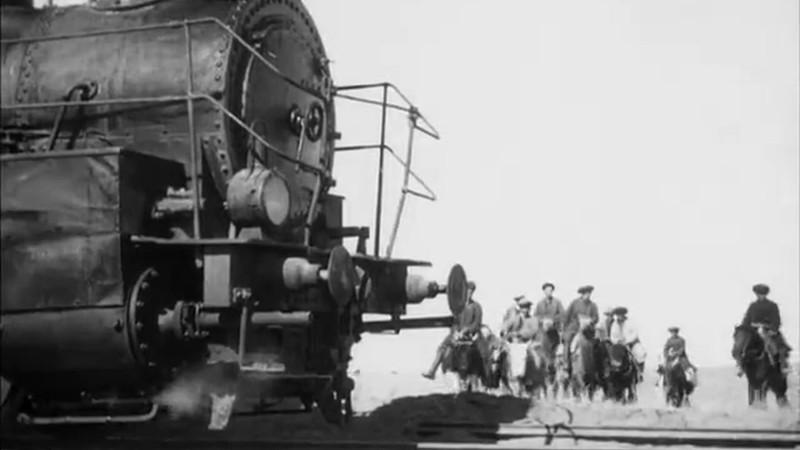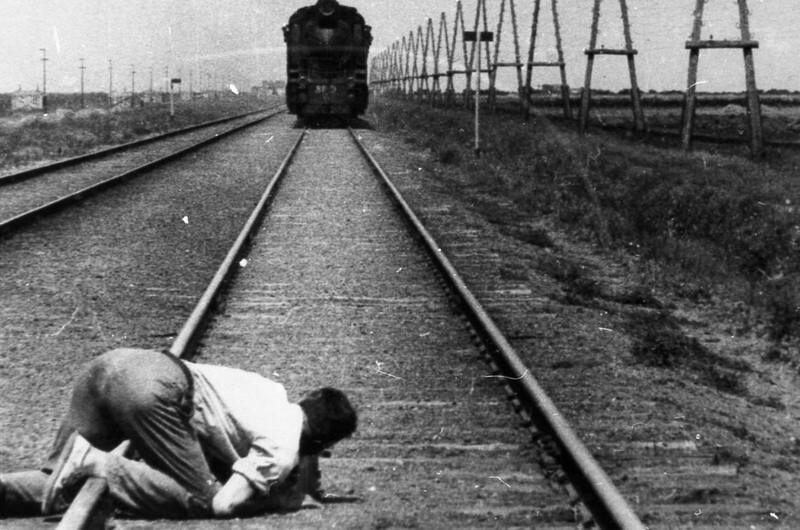The Russian Avant-Garde
When we think of the Russian cinematic avant-garde, the first name that comes to mind is Dziga Vertov, only then the others. Vertov (1896–1954) spent his entire life boldly speaking out against all that is artistic and artificial, from domestic psychological dramas to the works of his contemporary, Sergei Eisenstein. His focus was not on documentary film but on the gaze of the camera that someone holds in his hands, thus unconsciously recording contemporary life in all its truthful anarchy. Vertov resisted artistic categories and saw the director primarily as an organizer of film material – a constructor who works with the visible world. He felt an affinity for Constructivist terminology thanks to his friendship with the painter Alexander Rodchenko, who spent four years creating the titles for his films. In his early job putting together weekly newsreels using footage from the front, Vertov began to write manifestos calling for a new type of cinema and the use of original cinematic material. He shot all of his long documentaries in collaboration with his brother Mikhail Kaufman as cameraman, culminating in his most important work, after which Kaufman continued as a director in his own right. According to Yuri Tsivian, Kaufman preferred an Apollonian approach: his works are more analytical, whereas Vertov’s are above all emotionally charged, Dionysian. Although Kaufman was cinematically and ideologically more reserved, he ended his films in the same way as the forceful and more experimental Vertov – they strangely peter out, as if to portend a bleak future. Vertov’s artistic evolution was halted by the era’s harsh ideological criticism, and he was not rehabilitated until thirteen years after his death, when Russia’s kino-pravda loosely inspired the French cinéma-vérité of Chris Marker, Jean Rouch, et al.
These developments were presaged by his now classic work of the cinematic avant-garde. Vertov decided to call Man with a Movie Camera (1929) an experimental film for fear of being misunderstood. Is it a vision of a city that cannot be described on a map because the image presented is too fragmentary? Or is it a film that starts as a documentary about the role of the cameraman in Soviet society, only to become a metafilm exploring the nature of truth in film? In the opening sequence, we see a cameraman on the roof of a movie theater where people are just arriving to watch the film we are watching ourselves. We can read this information in the opening credits of the film that the projectionist threads into the movie projector. We are simultaneously inside and outside, which is not the first time Vertov applied this approach. It is as if he liked to peer behind the stage set of his own films or directly into the camera lens, which often finds itself directly in the shot, either alone or with the cameraman. The film is less about the reality it depicts than about the person filming it and what he must do to perform his task. Juxtaposition is replaced by collage and an unexpected sense of subtle humor, for instance when the cameraman runs across a bridge and an animated camera runs after him. The final scene showing the Bolshoi Theater collapse in on itself may symbolize the destruction of the old in favor of the new or the mental collapse of the person on the street for whom the pace of modern life is simply too much to bear. Man with a Movie Camera – an urban symphony that captures the simultaneity of human experience.

Turksib (Viktor Turin, 1929)
Vertov is significantly stronger when it comes to details than the overall structure of his films, and his work should be seen as a valuable source of inspiration for his successors but not as the be-all and end-all of film. In fact, his statements themselves show that he was not interested in the work as such but in creating a new cinematic language that above all would be emancipated from documentary. His contemporaries had the same goal, though they chose different means for its attainment. Though they started from the same basis, Vertov’s longtime cameraman and cinematographer Mikhail Kaufman (1902–1984) hewed closer to the regime’s demands in his own works. Esfir Shub (1894–1959), the creator of the compilation film, also worked with a diverse range of archival materials but did so in a more deferential manner. Mikhail Kalatozov (1903–1973) created mostly fiction films, though in an equally expressive style that was closer to the poetry than the prose of life. And Viktor Turin (1895–1945) – perhaps thanks to his American experience – managed to more remarkably emphasize the ethnic diversity of the new Soviet state. In fact, it is thanks to Russian film of the 1920 and ’30s that nobody questions documentary film’s proper place within cinema.


